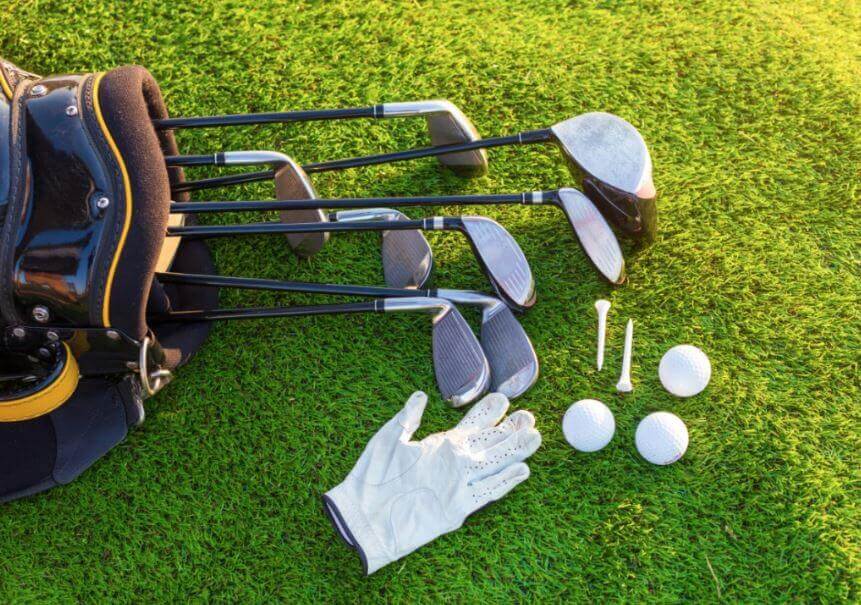What Are the Most Important Rules of Golf?

Golf is one of the most traditional sports. Therefore, it’s not surprising that it gains more and more followers every day. But what are the rules of golf? For anyone who starts having interest in this sport, it’s essential to know about its rules and regulations, at least the most important ones.
In practice, knowing the rules of golf will answer many of the questions and concerns that may arise during each game. Here’s a summary of the most important rules of golf.
Rules of golf: most important aspects
Course
The course constitutes one of the most important elements of golf. There should be five well-defined elements: the holes, the green, the tee, the fairway and the rough.
Equipment
This rule is one of the most important rules of golf; it refers to everything related to the player’s equipment. According to this rule, the player must use the balls and clubs that are specified in the regulations, which limits each player to having no more than 14 clubs.
It’s also important to know that players can’t replace the clubs, even if they lose or damage them. Likewise, the use of equipment that can help artificially during the game is prohibited.

Player conduct
Golf regulations state that all participants or players must conduct themselves with integrity, and that they must always show consideration for others.
This behavior means that players should be completely honest, even when it comes to applying the different penalties to themselves. Regarding concentration and focus, golfers must play at an acceptable pace, without distracting the other competitors and ensuring the safety of everyone present.
The game
Golf is a game that consists of a course of 18 holes or less, this is according to the Spanish Golf Federation. In a nutshell, the aim is to negotiate the golf course with as few shots as possible.
In general, each competitor must play the course however they find their ball, and they should also play the ball at rest.
A round of golf
As we’ve seen, golfers should play continuously and at a good pace. In fact, it’s recommended that each competitor takes no more than 40 seconds to execute their shot.
In the event of a tie, the match will be decided with a playoff. This could be a hole-by-hole tie break or a new game over a stipulated number of holes.
How is the winner determined?
The winner of the game is the person who manages to get the ball into the 18 holes with the fewest swings possible. In order to keep the score, the players use a point system that adds up at the end of each round. Besides that, if a tie happens, the players can choose one of the options above to determine a winner.
Other rules of golf
Each player must only use their own ball. Each of the competitors usually marks their ball with indelible marking, so as to not confuse it with the ball of other players. This point is very important, because hitting the ball of another competitor carries a penalty.

Other aspects that may carry penalties are hitting the balls out of bounds or losing a ball. These are punishable actions in the game.
The player that is the furthest away from the hole will determine the order of competitors, for safety reasons. This means that the first one to swing is the one furthest away.
Important rules of golf: conclusion
Golf is a challenging and exciting game. Knowing its rules is an essential step to learn how to play it well and gradually improve. Although these are some of the basic rules, there are many more that players must get to know and learn.
Golf is one of the most traditional sports. Therefore, it’s not surprising that it gains more and more followers every day. But what are the rules of golf? For anyone who starts having interest in this sport, it’s essential to know about its rules and regulations, at least the most important ones.
In practice, knowing the rules of golf will answer many of the questions and concerns that may arise during each game. Here’s a summary of the most important rules of golf.
Rules of golf: most important aspects
Course
The course constitutes one of the most important elements of golf. There should be five well-defined elements: the holes, the green, the tee, the fairway and the rough.
Equipment
This rule is one of the most important rules of golf; it refers to everything related to the player’s equipment. According to this rule, the player must use the balls and clubs that are specified in the regulations, which limits each player to having no more than 14 clubs.
It’s also important to know that players can’t replace the clubs, even if they lose or damage them. Likewise, the use of equipment that can help artificially during the game is prohibited.

Player conduct
Golf regulations state that all participants or players must conduct themselves with integrity, and that they must always show consideration for others.
This behavior means that players should be completely honest, even when it comes to applying the different penalties to themselves. Regarding concentration and focus, golfers must play at an acceptable pace, without distracting the other competitors and ensuring the safety of everyone present.
The game
Golf is a game that consists of a course of 18 holes or less, this is according to the Spanish Golf Federation. In a nutshell, the aim is to negotiate the golf course with as few shots as possible.
In general, each competitor must play the course however they find their ball, and they should also play the ball at rest.
A round of golf
As we’ve seen, golfers should play continuously and at a good pace. In fact, it’s recommended that each competitor takes no more than 40 seconds to execute their shot.
In the event of a tie, the match will be decided with a playoff. This could be a hole-by-hole tie break or a new game over a stipulated number of holes.
How is the winner determined?
The winner of the game is the person who manages to get the ball into the 18 holes with the fewest swings possible. In order to keep the score, the players use a point system that adds up at the end of each round. Besides that, if a tie happens, the players can choose one of the options above to determine a winner.
Other rules of golf
Each player must only use their own ball. Each of the competitors usually marks their ball with indelible marking, so as to not confuse it with the ball of other players. This point is very important, because hitting the ball of another competitor carries a penalty.

Other aspects that may carry penalties are hitting the balls out of bounds or losing a ball. These are punishable actions in the game.
The player that is the furthest away from the hole will determine the order of competitors, for safety reasons. This means that the first one to swing is the one furthest away.
Important rules of golf: conclusion
Golf is a challenging and exciting game. Knowing its rules is an essential step to learn how to play it well and gradually improve. Although these are some of the basic rules, there are many more that players must get to know and learn.
All cited sources were thoroughly reviewed by our team to ensure their quality, reliability, currency, and validity. The bibliography of this article was considered reliable and of academic or scientific accuracy.
- Web oficial Federación Española de Golf. Extraído de: http://www.rfegolf.es/default.aspx
- Reglamento Golf, Extraído de: http://www.rfegolf.es/ArtculosDocumento/REGLAS/Reglas%202019/Reglas%20de%20Golf%20completas%202019.pdf
- Partes de un campo de golf. Descubre cuáles son. 2016. Golf Park Madrid. http://www.golfpark.es/partes-de-un-campo-de-golf-descubre-cuales-son/
This text is provided for informational purposes only and does not replace consultation with a professional. If in doubt, consult your specialist.








